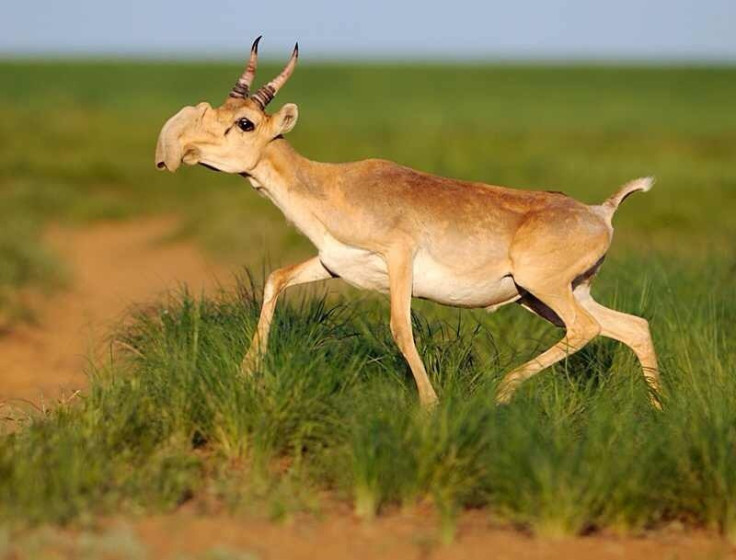Half of world's saiga antelopes died this month from unknown cause

Scientists estimate that almost half of the world's population of the saiga antelope (Saiga tatarica) has died since 10 May this year. Saiga are strange-looking Ice Age antelopes which once roamed central Asia in the millions. They are now listed as critically endangered. Many of the small number of surviving saiga are confined to three areas of Kazakhstan and two isolated areas of Mongolia.
So far the causes of the estimated 120,000 deaths so far this month are unknown.
"It's very dramatic and traumatic, with 100% mortality," said UK vet Richard Kock told New Scientist magazine. Kock has travelled to Kazakhstan to help local conservationists. "I know of no example in history with this level of mortality, killing all the animals and all the calves," he said.
Kazakhstan's Agriculture Ministry has stated they believe a bacterial infection known as pasteurellosis might be responsible for the deaths. However, conservationist and saiga expert E.J. Milner-Gulland, of the Saiga Conservation Alliance (SCA), is not fully persuaded.
"The fact that you are getting positive reports of Pasteurella doesn't mean the bacterium is the underlying reason the animals are dying," she said in an interview with Radio Free Europe. "[The bacteria] is there naturally and it's kind of opportunistic."
The saiga population is believed to have already declined by 95% in the 15 years up to 2012, according to the SCA. Scientists and conservationists are continuing to investigate other possibilities, including mosquito-borne illness. During November 2010 in a bid to save the species Kazakhstan reaffirmed a ban on hunting saiga antelopes and extended it until 2021.
© Copyright IBTimes 2025. All rights reserved.





















